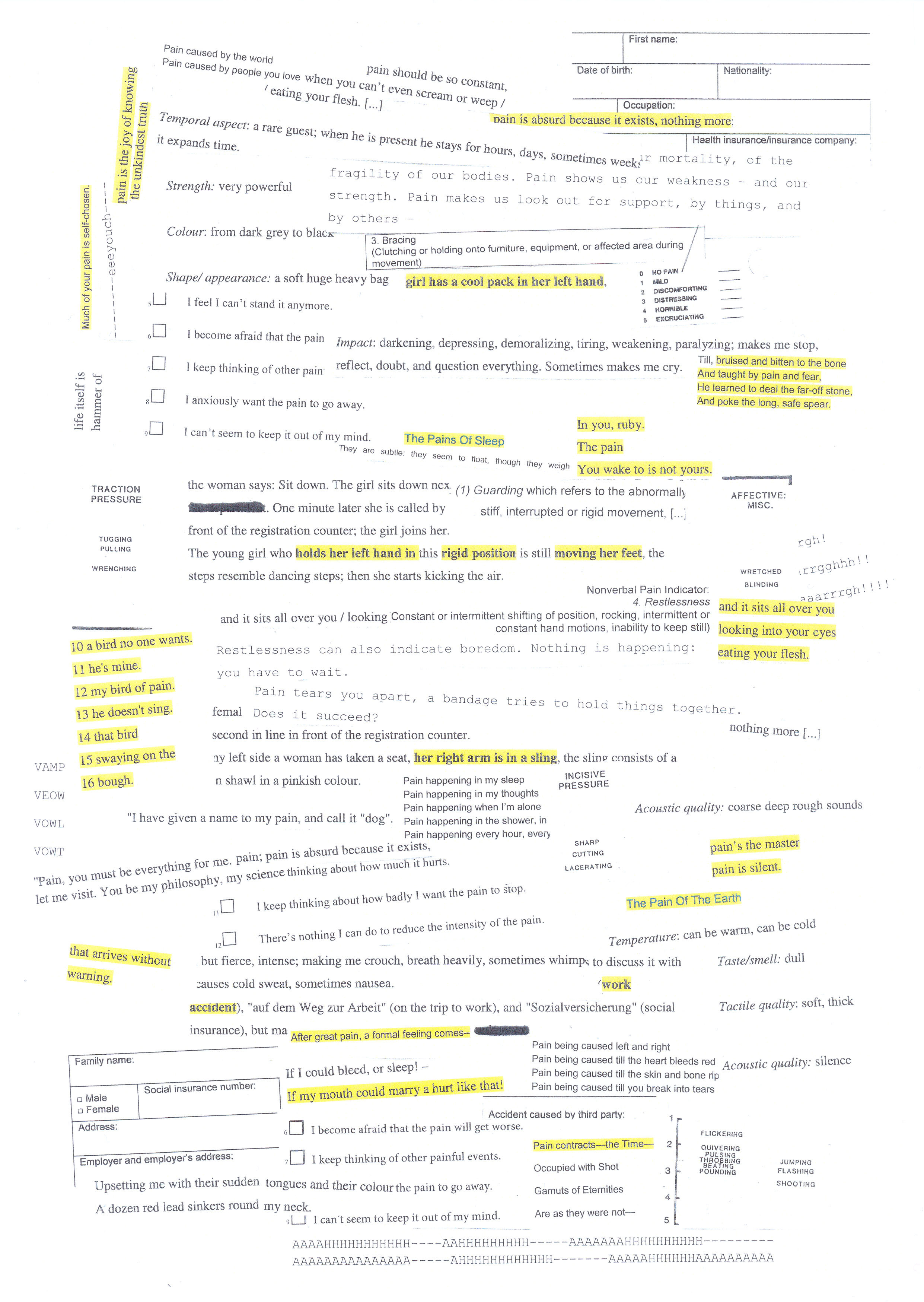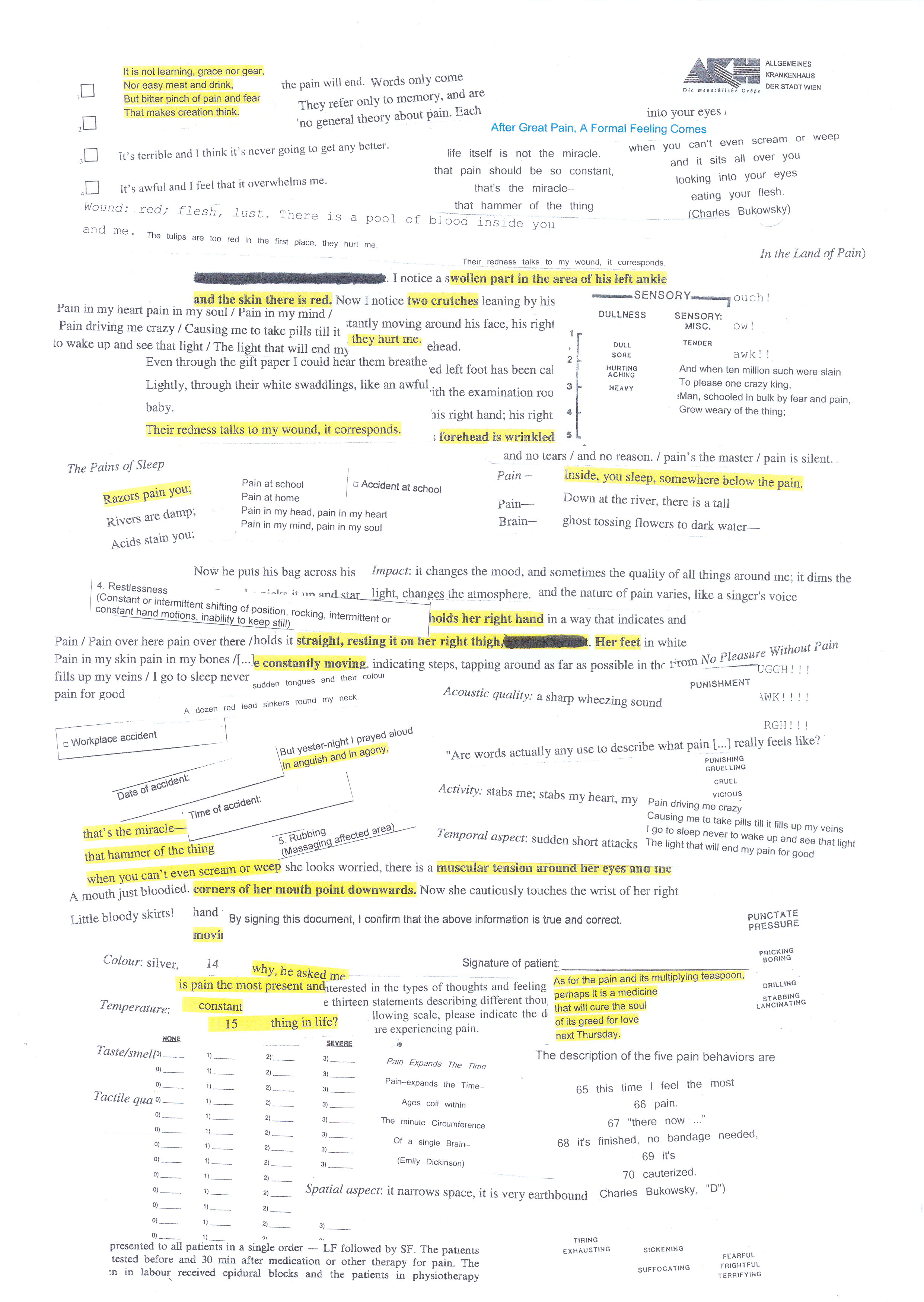V. CUTTING UP – ASSEMBLING PAINS
To render the results of my observation experiments (as described in IV. GOING INTO THE FIELD) productive, in order to gain new knowledge on pain, I used literary techniques from Dadaism and Surrealism.
V.I Cut-up
The first method I employed was the cut-up technique. At the start of the 20th century, Dada artists developed cut-up as an aleatory literary technique, in which one would cut a text into fragments, and then rearrange these fragments into a new text. The creative principle behind this method is chance, but you can also define criteria for the way the text parts are to be rearranged.
Using this method, I loosely followed what D. H. Lawrence called ‘the logic of emotions’, which comes into effect during the very particular act of thinking and feeling simultaneously:
'When we are thinking emotionally or passionately, thinking and feeling at the same time, [...] the mind makes swoops and circles. It touches the point of painor interest, then sweeps away again in a cycle, coils round and approaches again the point of pain or interest.'[1]
To my understanding, this logic of emotions Lawrence indicates is closely related to Brian Massumi's designation of affect as ‘bodily thinking’, as a ‘movement of thought’ or a ‘thinking movement’ that follows ‘certain logical categories’.[2]
V.II Free association
The other technique I adopted was the method of free association, as introduced by French surrealists into literature, inspired by the works of Sigmund Freud and his development of the psychoanalytic method.[3] Here, a word or an idea acts as a trigger for other words or a sequence of other words or ideas, which may or may not logicallyrelate.
The basic texts for my interventions along these techniques were the three observation protocols of my field experiments as described in IV. GOING INTO THE FIELD.
V.III Assemblage
The following assemblage presents the results of my investigations into the meaning of pain, condensing the outcomes of my experiments looking at, imagining and feeling pain.
The assemblage consists of different types of texts: clippings from the protocols I obtained from my methodical observations in hospitals, questions from pain questionnaires, poem lines, passages from my diary concerning my own pain experiences, interviews with experts on pain, philosophical essays, and studies published in scientific journals.
They unfold different perspectives on pain that are connected and put in relation to each other by the logic that emerged over the course of this research.


